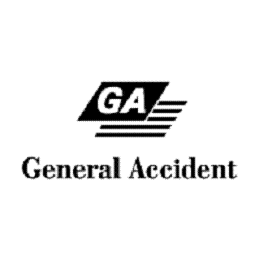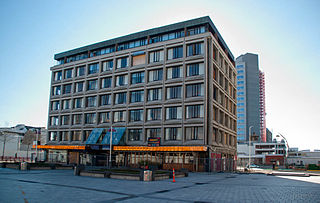Related Research Articles

John Maynard Keynes, 1st Baron Keynes,, was an English economist and philosopher whose ideas fundamentally changed the theory and practice of macroeconomics and the economic policies of governments. Originally trained in mathematics, he built on and greatly refined earlier work on the causes of business cycles. One of the most influential economists of the 20th century, he produced writings that are the basis for the school of thought known as Keynesian economics, and its various offshoots. His ideas, reformulated as New Keynesianism, are fundamental to mainstream macroeconomics. He is known as the "father of macroeconomics".
The Abbey National Building Society was formed in 1944 by the merger of the Abbey Road and the National building societies.

Friends' Provident Insurance was a banking institution founded in 1832 to serve the needs of the Society of Friends (Quakers). Based in Bradford, Yorkshire, it concentrated on sickness and annuity policies until its life fund acquired Century Insurance in 1918, expanding into general insurance. The restriction to Quaker membership was an increasing constraint but the ties were substantially reduced by the Friends' Provident Institution Act 1915. Although Century's branch network enabled FPI to expand, the periodic underwriting losses strained the life fund's capital base and Century was sold in 1975. In the year 2000, Friends Provident demutualised and listed on the FT100 Index. After abortive takeover negotiations, Friends accepted a takeover bid from Resolution Limited in 2009.

New York Life Insurance Company (NYLIC) is the third-largest life insurance company and the largest mutual life insurance company in the United States, and is ranked #71 on the 2023 Fortune 500 list of the largest U.S. corporations by total revenue. In 2023, NYLIC achieved the best possible ratings by the four independent rating companies. Other New York Life affiliates provide an array of securities products and services, as well as institutional and retail mutual funds.
The Massachusetts Mutual Life Insurance Company, also known as MassMutual, is a Springfield, Massachusetts-based life insurance company.
Kleinwort Benson was a leading investment bank that offered a wide range of financial services from offices throughout the United Kingdom and Channel Islands. Two families, the Kleinworts and the Bensons, founded two different merchant banks in London. They merged in 1961 to create Kleinwort Benson Lonsdale, later Kleinwort Benson. Following its acquisition by Société Générale in June 2016, it was merged with SG Hambros, already a subsidiary of Société Générale, to form Kleinwort Hambros in November 2016.
Henderson Group plc was a global investment management company with its principal place of business in the City of London. It merged with Janus Capital Group in May 2017 to create Janus Henderson.

The Refuge Assurance Company Ltd. was a life insurance and pensions company based in England. It was founded by James Proctor and George Robins in Dukinfield, Cheshire in 1858. The company was originally known by the unwieldy name of the Refuge Friend in Deed Life Assurance and Sick Fund Friendly Society.

General Accident plc was a large insurance business based in Perth, Scotland. It merged with Commercial Union in 1998 to form CGU plc.

The Colonial Mutual Life Assurance Society Limited, later Colonial Limited, and commonly known as Colonial Mutual, Colonial Mutual Life, and/or CML, was a diverse international financial services company headquartered in Melbourne, Australia. Colonial's core businesses were life and general insurance, retirement savings, banking and funds management. The company operated in the United Kingdom, New Zealand and the Fiji Islands for more than a century.
Lord, Abbett & Co. LLC is an independent, privately-held investment management company headquartered in Jersey City, New Jersey. The firm offers a variety of fixed−income and equity strategies to individual and institutional investors. Lord Abbett has a global presence with offices in Jersey City, Dubai, Dublin, London, Montevideo, Singapore, Tokyo, and Zurich.
Royal London Asset Management (RLAM) is a UK-based investment management company. RLAM invests across a broad range of core asset classes including fixed income, equities, multi asset, cash and property. It also offers funds that adopt an ethical or sustainable approach.

The Royal London Mutual Insurance Society Limited, along with its subsidiaries, is the largest mutual insurer in the United Kingdom, with Group funds under management of over £150 billion. Group businesses provide around nine million policies and employ 4046 people, as of June 2019.
The Marine and General Mutual Life Assurance Society was a British insurance company that was established in 1852. The company was dissolved on 10 July 2018, following the transfer of business to Scottish Friendly on 1 June 2015. The society was Great Britain's longest-registered company and held the company registration number 00000006.
Buckmaster & Moore (B&M) was a London stockbroker established in 1895 and acquired by Credit Suisse Group in 1987.
Old Mutual Holdings Plc, Formally known as UAP Holdings Limited, is an investment, retirement, and insurance group that operates mainly in Eastern Africa. UAP Holdings is one of the leading insurance and financial services groups in eastern Africa with a network of branches and operational subsidiaries spread across the greater eastern and central Africa regions.

The Mutual Life Insurance Company of New York was the oldest continuous writer of insurance policies in the United States. Incorporated in 1842, it was headquartered at 1740 Broadway, before becoming a wholly owned subsidiary of AXA Financial, Inc. in 2004.

The Scottish Amicable Life Assurance Society, commonly known as Scottish Amicable, was founded in Glasgow in 1826 and became the sixth largest mutual life assurance institution in the UK with 1.9 million policy holders in the mid-1990s.
Scottish Mutual Assurance was formed in 1883 as the Scottish Temperance Life Assurance Society, intended as the only life assurance company serving exclusively abstainers. It was renamed Scottish Mutual Assurance in 1951 and acquired by Abbey National in 1991.
Oswald Toynbee Falk was a stockbroker and economist, born in the Toxteth area of Liverpool on 25 May 1879 to Hermann John Falk and Rachel Russell Everard Toynbee. He was the nephew of social philosopher and economist Arnold Toynbee. Falk attended Rugby School and Balliol College, Oxford where he trained as an actuary. He worked for the National Mutual Life Assurance Society and became a fellow of the Institute of Actuaries before leaving the profession in 1914. Afterwards he joined the London stock exchange and in 1917 was invited by John Maynard Keynes to work at the Treasury where he proved himself to be a gifted ‘practical economist’.
References
- 1 2 3 4 Street and Glenn, The National Mutual Life Assurance Society 1830-1980, London, 1980
- ↑ "Falk, Oswald Toynbee (1879–1972), stockbroker and economist". Oxford Dictionary of National Biography.
- 1 2 Nicolas Davenport, Memoirs of a City Radical, London 1974
- ↑ "National Mutual Life Assurance Society: Appointment of Dresdner to review mutual status". The Times. 10 March 2001.
- ↑ "National Mutual Life Assurance Society". Companies House. Retrieved 7 July 2023.